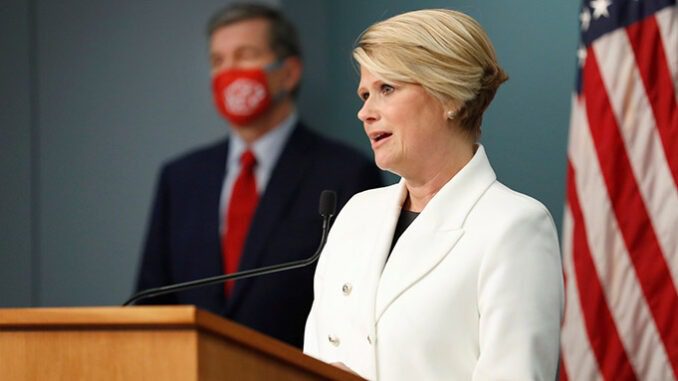
RALEIGH — On March 4, the N.C. Department of Health and Human Services (NCDHHS) announced it would be expanding its COVID-19 testing pilot, which was rolled out to participating K-12 schools late last year.
According to the program details and NCDHHS, the tests used are rapid antigen tests, and they are free to participating schools and districts. Testing is not required for schools to provide in-person instruction, nor is participation by students mandatory.
“The Centers for Disease Control and Prevention recommends diagnostic and screening testing as an additional prevention measure to the essential mitigation strategies of mask use and physical distancing, among others, which aligns with DHHS’s StrongSchoolNC guidance,” NCDHHS said in its statement announcing the expansion.
“Layering mitigation efforts is essential to reduce the spread of the virus as we re-open our schools,” said state health director and NCDHHS chief medical officer Dr. Elizabeth Cuervo Tilson. “We are excited to be expanding beyond pilot schools to offer this additional layer of mitigation to interested LEAs and charter schools.”
All public-school districts and charter schools will be eligible to request tests as of March 4.
The pilot expansion information was also presented to the N.C. State School Board at a meeting held the same day as the announcement.
Dr. Aditi Mallick, director of the COVID-19 Operations Center, told the state board that 53,000 tests were sent to the 200 schools in 17 districts and 11 charter schools that took part in the pilot that began last year.
Several slides Mallick presented described the difference in types of tests and screenings. She noted that antigen tests detect current infections and are fast and inexpensive; whereas, PCR tests can detect virus in smaller amounts of the virus and are more sensitive.
Mallick said three check-in meetings along with a pre and post survey were used to support participants and gather qualitative and quantitative data from the pilot.
North State Journal made multiple requests to NCDHHS for more information about the pilot’s progress and the data mentioned by Mallick but did not receive response.
A question was asked by a board member about why the testing pilot was being extended if teachers and staff are being vaccinated.
“We will be expanding access to COVID-19 testing on an opt-in basis to add a layer of protection,” said Mallick.
State Superintendent Catherine Truitt then asked NCDHHS and the board of education what the plan is for getting students back in the classroom.
Truitt asked NCDHHS what metrics need to be in place for those students currently under Plan B to go with 3 feet while social distancing instead of six.
“We need to be very careful we are not suggesting that Plan B is adequate; it is not,” said Truitt, adding that for high schoolers, Plan B means “being in class 20% of the time.”
The officials from NCDHHS, which included Deputy Secretary Susan Gale Perry, responded by repeating that “state guidance matches CDC guidance” on transmission levels and case rates and that North Carolina metrics were “moving in the right direction.”
Truitt did not let the topic go, asking again what specific metric target NCDHHS was trying to hit to change to the toolkit’s social distancing. The response she received was, “there is not one single number.”
NCDHHS officials said that they look at a “wide number” of metrics, including number of cases per 100,000 people, hospitalization rates, hospital capacity and other case data.
“DHHS needs to make public the metrics that will determine changes,” said Truitt. “We need more clarity.” She added that “It feels like we’re kicking the can down the street” and this has been “an exercise in frustration” for local superintendents.
“It’s time for you to put a stake in the ground and say this is what needs to happen for kids to be back in school,” Truitt told the official from NCDHHS.


